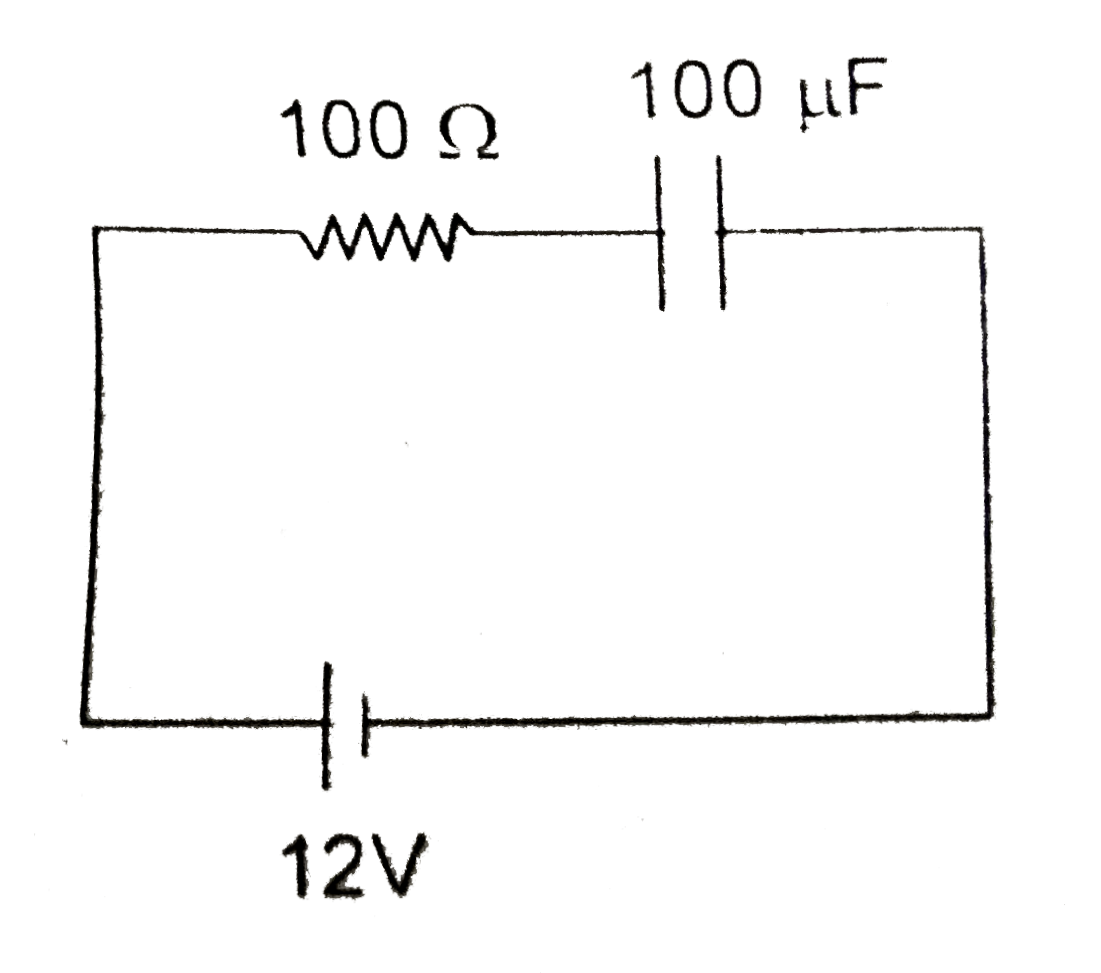Define displacement current. What role does it play while charging a capacitor by de source? Is the value of displacement current same as that of the conduction current? Explain.
Step-by-Step Solution
1. Definition of Displacement Current:
Displacement current is defined as the current that is generated due to a change in electric flux. It is a concept introduced by James Clerk Maxwell to account for the changing electric field in situations where there is no actual flow of charge, such as in the gap between the plates of a capacitor.
2. Role of Displacement Current While Charging a Capacitor:
When a capacitor is connected to a voltage source, an electric field is established between its plates, causing charges to accumulate. Initially, there is a flow of conduction current in the circuit as the capacitor charges. However, since the plates of the capacitor are not in contact, there is no conduction current flowing through the dielectric between the plates. Instead, the changing electric field between the plates creates a displacement current, which allows the continuity of current flow in the circuit. This displacement current is essential to maintain the flow of electric field lines and ensures that the total current in the circuit remains continuous.
3. Comparison of Displacement Current and Conduction Current:
In the context of a charging capacitor, the displacement current (I_D) is equal to the conduction current (I_C) at any point in the circuit. This equality arises because, although there is no actual charge flow between the plates, the changing electric field creates an equivalent current that can be considered as displacement current. Mathematically, this can be expressed using Ampere's law, where the integral of the magnetic field around a closed loop is proportional to the sum of the conduction current and the displacement current. Thus, in the case of a charging capacitor, we can conclude that I_C = I_D.
Displacement current is defined as the current that is generated due to a change in electric flux. It is a concept introduced by James Clerk Maxwell to account for the changing electric field in situations where there is no actual flow of charge, such as in the gap between the plates of a capacitor.
When a capacitor is connected to a voltage source, an electric field is established between its plates, causing charges to accumulate. Initially, there is a flow of conduction current in the circuit as the capacitor charges. However, since the plates of the capacitor are not in contact, there is no conduction current flowing through the dielectric between the plates. Instead, the changing electric field between the plates creates a displacement current, which allows the continuity of current flow in the circuit. This displacement current is essential to maintain the flow of electric field lines and ensures that the total current in the circuit remains continuous.
In the context of a charging capacitor, the displacement current (I_D) is equal to the conduction current (I_C) at any point in the circuit. This equality arises because, although there is no actual charge flow between the plates, the changing electric field creates an equivalent current that can be considered as displacement current. Mathematically, this can be expressed using Ampere's law, where the integral of the magnetic field around a closed loop is proportional to the sum of the conduction current and the displacement current. Thus, in the case of a charging capacitor, we can conclude that I_C = I_D.
Topper's Solved these Questions
- BOOK - MODERN PUBLICATIONCHAPTER - ELECTROMAGNETIC WAVESEXERCISE - REVISION EXERCISES ( LONG ANSWER QUESTIONS )1videos
ELECTROMAGNETIC WAVES
- BOOK - MODERN PUBLICATIONCHAPTER - ELECTROMAGNETIC WAVESEXERCISE - REVISION EXERCISES ( NUMERICAL PROBLEMS )8videos
ELECTROMAGNETIC WAVES
- BOOK - MODERN PUBLICATIONCHAPTER - ELECTROMAGNETIC WAVESEXERCISE - REVISION EXERCISES ( FILL IN THE BLANKS )7videos
ELECTROMAGNETIC WAVES
- BOOK - MODERN PUBLICATIONCHAPTER - ELECTROMAGNETIC INDUCTIONEXERCISE - CHAPTER PRACTICE TEST FOR BOARD EXAMINATION14videos
ELECTROMAGNETIC INDUCTION
- BOOK - MODERN PUBLICATIONCHAPTER - ELECTROSTATIC POTENTIAL AND CAPACITANCE EXERCISE - Chapter Practice Test9videos
ELECTROSTATIC POTENTIAL AND CAPACITANCE
Similar Questions
Knowledge Check
- Question 1 - Select One
Displacement current is same as
Aconduction current due to flow of free electronsBconduction current due to flow of positive ionsCconduction current due to flow of both positive and negative free charge carriersDis not a conduction current but is caused by time varying electric field - Question 2 - Select One
The S.I unit of displacement current is
AHenryBCoulombCAmpereDFarad - Question 3 - Select One

The value of displacement current at t=1 time constant isA120eB120e2C120 mADnone of these

